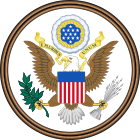Adolescent Family Life Act
 | |
| Long title | A bill to provide for reconciliation pursuant to section 301 of the First Concurrent Resolution on the Budget for the Fiscal Year 1982 |
|---|---|
| Acronyms (colloquial) | AFLA |
| Nicknames | Adolescent Family Life Act, Chastity Act,[1] Chastity Bill[2] |
| Enacted by | the 97th United States Congress |
| Citations | |
| Public law | Pub. L. 97–35 |
| Codification | |
| Acts amended | Public Health Service Act |
| Titles amended | 42 U.S.C.: Public Health and Social Welfare |
| U.S.C. sections created | 42 U.S.C. § 300z |
| U.S.C. sections amended | 42 U.S.C. § 300 |
| Legislative history | |
| |
| United States Supreme Court cases | |
| Bowen v. Kendrick | |
The Adolescent Family Life Act (AFLA) is a United States federal law enacted during the Reagan Administration as part of the Omnibus Budget Reconciliation Act of 1981.[3][4] AFLA provided funding for a series of social programs aimed at promoting abstinence through reproductive health education.[3]
Background
[edit]The original bill, S. 1090, was proposed by Jeremiah Denton (R-AL) and Orrin Hatch (R-UT) as an amendment to the Public Health Service Act of 1970.[5][6][page needed] On 4 November 1981, Senate voted to indefinitely postpone S. 1090.[5] However, its provisions to amend the Public Health Service Act, repeal parts of the Health Services and Centers Amendments of 1978, and provide grants for the Adolescent Family Life Demonstration Projects were incorporated into the H.R. 3982 Omnibus Budget Reconciliation Act of 1981.[4][7]
Controversy
[edit]The bill carried strong religious undertones, particularly with the strategic funding of Catholic organizations.[8] Consequently, questions were raised with regard to the constitutionality of the law.[3] The case was later brought before the Supreme Court in 1988 in Bowen v. Kendrick, which upheld the law.
References
[edit]- ^ Benshoof, Janet (June 1988). "The Chastity Act: Government Manipulation of Abortion Information and the First Amendment". Harvard Law Review. 101 (8): 1916–1937. doi:10.2307/1341442. JSTOR 1341442. PMID 10288540.
- ^ Dryfoos, Joy G. (January 1985). "A time for new thinking about teenage pregnancy". American Journal of Public Health. 75 (1): 13–14. doi:10.2105/AJPH.75.1.13. PMC 1646136. PMID 3966593.
- ^ a b c Walker, Thomas Gray (Spring 1989). "Constitutional Law - The Constitutionality of the Adolescent Family Life Act: An Analysis of Bowen v. Kendrick and Its Impact on Current Establishment Clause Jurisprudence". Campbell Law Review. 11 (2): 243–262. Archived from the original on 2016-10-28. Retrieved 2016-10-27.
- ^ a b Saul, Rebekah (April 1998). "Whatever Happened to the Adolescent Family Life Act?". The Guttmacher Report on Public Policy. 1 (2): 5, 10–11. Archived from the original on 2016-10-28. Retrieved 2016-10-27.
- ^ a b "S.1090 - A bill to amend the Public Health Service Act to support services and research relating to adolescent pregnancy and parenthood". Congress.gov. Library of Congress. 4 November 1981. Archived from the original on 28 October 2016. Retrieved 27 October 2016.
- ^ Schultz, Jeffery D.; van Assendelft, Laura A., eds. (1999). Encyclopedia of Women in American Politics. Oryx Press. ISBN 1573561312.
- ^ "H.R.3982 - Omnibus Budget Reconciliation Act of 1981". Congress.gov. Library of Congress. 13 August 1981. Archived from the original on 28 October 2016. Retrieved 27 October 2016.
- ^ Donovan, Patricia (September 1984). "The Adolescent Family Life Act and the promotion of religious doctrine". Family Planning Perspectives. 16 (5): 222–228. doi:10.2307/2135070. JSTOR 2135070. PMID 6500022.
